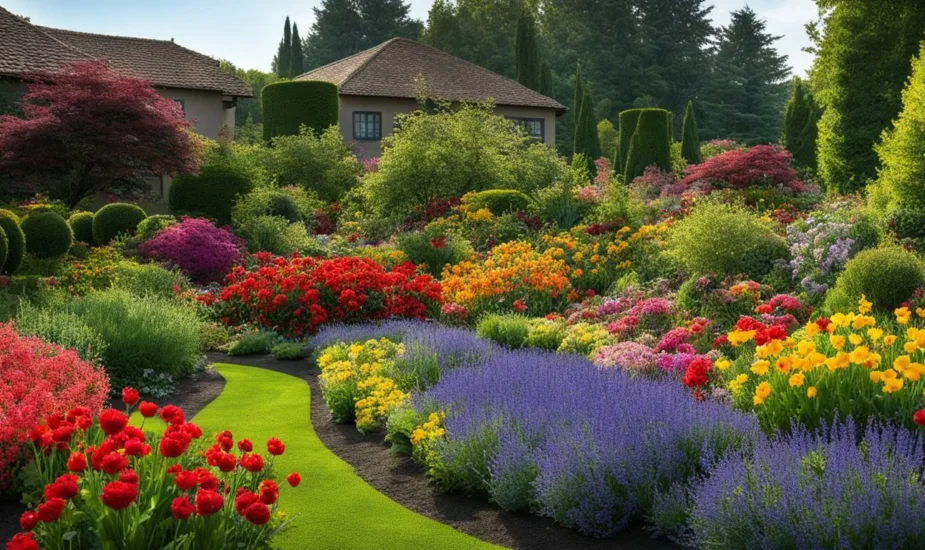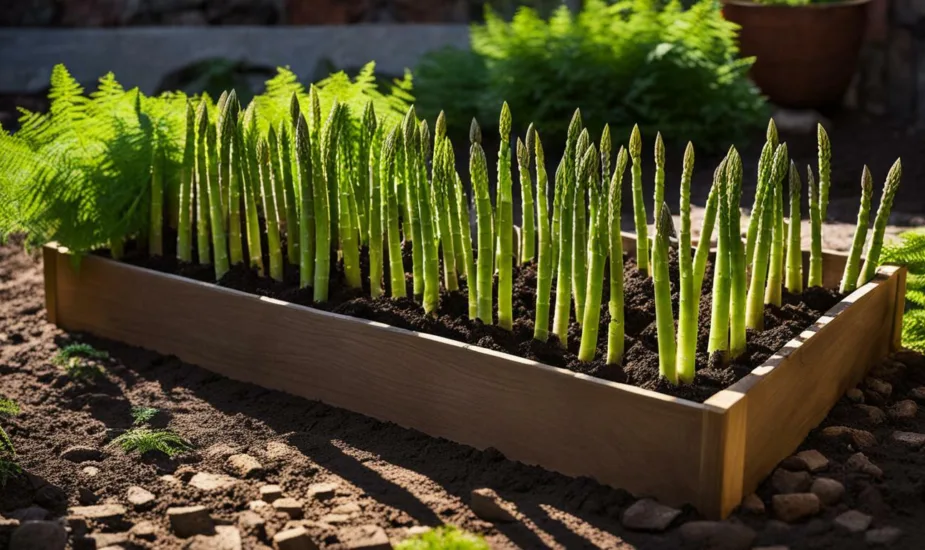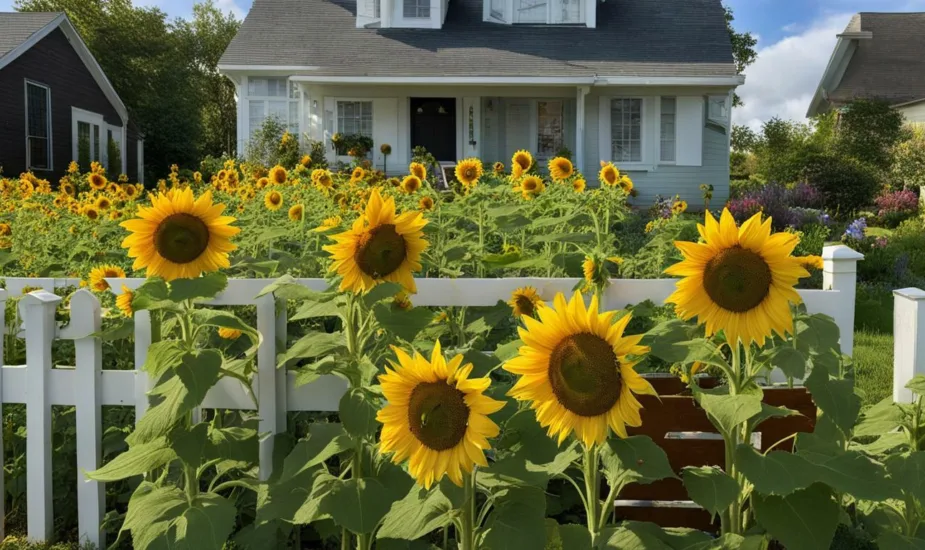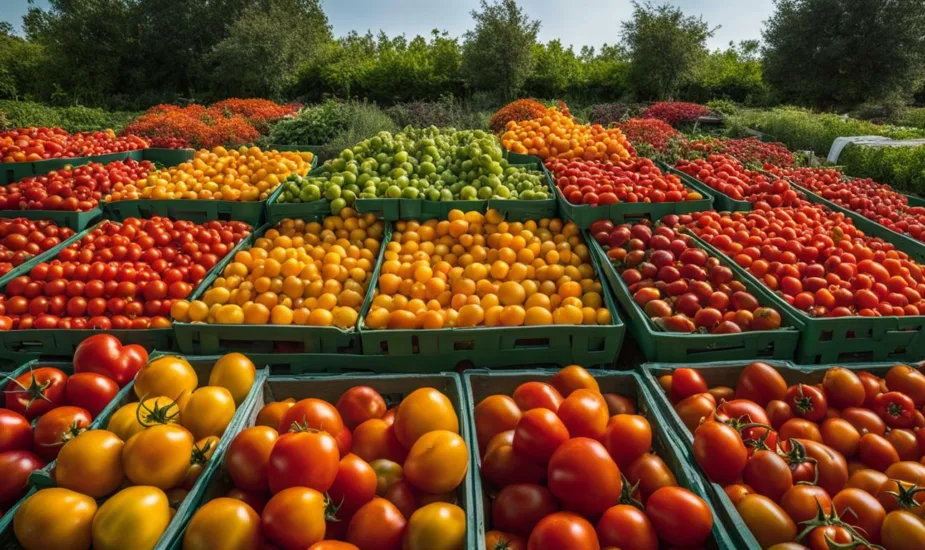Master Square Foot Gardening: Green Beans Made Simple

Square foot gardening is a highly efficient and manageable gardening technique that allows you to maximize your green bean harvest. Whether you have limited space or are a beginner gardener, square foot gardening simplifies the process of growing green beans, making it a rewarding addition to any backyard garden.
When it comes to green beans, there are two main types to choose from: bush beans and pole beans. Bush beans stay low to the ground and do not require support, while pole beans need a trellis or support structure to climb on. Both varieties produce well and have different harvesting patterns, providing a versatile range of options for your garden.
To ensure the success of your green beans, it is important to provide them with optimal growing conditions. They thrive in well-drained soil and require 6-8 hours of sunlight per day. Planting green beans in the late spring, after the threat of frost has passed, is recommended for optimal growth.
In a traditional row planting, bush beans should be spaced 4 inches apart, while pole beans should be spaced 6 inches apart along the supports. In square foot gardening, you can plant 8 pole bean seeds or 9 bush bean seeds per square, maximizing the use of space and ensuring a bountiful harvest.
Regular watering is essential for green beans, and picking them frequently encourages continuous production. To enhance the growth and productivity of green beans, consider planting companion plants such as beets, carrots, corn, cucumbers, peas, strawberries, cabbage, and swiss chard.
Green beans can be enjoyed in various ways, both raw and cooked. They can be pan-cooked, boiled, steamed, or added to your favorite recipes. Additionally, they can be preserved through freezing, pickling, or canning, allowing you to enjoy them all year round.
With its simplicity and versatility, square foot gardening for green beans is a rewarding and manageable gardening technique that can be easily implemented in any backyard garden, regardless of its size.
- Square foot gardening simplifies the process of growing green beans, making it ideal for both beginners and experienced gardeners.
- Green beans thrive in well-drained soil with 6-8 hours of sunlight per day.
- Bush beans and pole beans are two main types of green beans, each with their own characteristics and harvesting patterns.
- Regular watering and frequent picking are essential for continuous production of green beans.
- Companion planting with beets, carrots, corn, cucumbers, peas, strawberries, cabbage, and swiss chard can enhance the growth of green beans.
Getting Started with Square Foot Gardening
To begin square foot gardening for green beans, it’s crucial to plan your garden layout and utilize efficient techniques that optimize space and yield. Square foot gardening is a popular method that allows you to grow more in less space while reducing the effort required for maintenance. Here, I will provide you with essential tips and techniques to get started with square foot gardening for green beans.
Planning Your Garden Layout
Before planting your green beans, carefully consider your garden layout. In square foot gardening, you divide your garden into small, manageable squares, typically measuring 1 foot by 1 foot. This allows for efficient use of space and easy access to each plant. Use a sturdy board or string to create a grid that divides your garden into equal squares.
Next, you’ll need to decide how many green bean plants to grow based on the space available. In a traditional row planting, you would space bush beans 4 inches apart and pole beans 6 inches apart along supports. However, in square foot gardening, you can maximize your yield by planting 8 pole bean seeds or 9 bush bean seeds per square. This close spacing ensures that there is no wasted space in your garden, resulting in a bountiful harvest.
Optimizing Space and Yield
Square foot gardening allows for efficient use of space, but it’s important to optimize your garden for maximum yield. One technique is to use vertical supports for pole beans. Plant your pole beans near a trellis or support structure, and as they grow, guide them to climb up the supports. This not only saves space but also makes harvesting easier by keeping the beans off the ground.
Another technique to optimize yield is companion planting. Green beans benefit from growing alongside certain plants that provide shade or attract beneficial insects. Consider planting beets, carrots, corn, cucumbers, peas, strawberries, cabbage, or swiss chard near your green beans. These companion plants can help improve pollination, deter pests, and enhance the overall health of your green bean plants.
Conclusion
Getting started with square foot gardening for green beans is an excellent way to make the most of your space and optimize your yield. By carefully planning your garden layout and utilizing efficient techniques, you can grow a thriving green bean harvest in limited space. Remember to consider vertical supports for pole beans and companion planting to further enhance your yields. With square foot gardening, growing green beans has never been simpler or more rewarding.
Growing Green Beans in Square Foot Gardens
Green beans are a versatile and rewarding addition to square foot gardens, but they require specific conditions for optimal growth and yield. To ensure success, it is essential to prepare the soil properly and provide adequate sunlight and water. Additionally, understanding the planting and spacing requirements, as well as the best companions for green beans, will help maximize your harvest.
When preparing the soil for green bean cultivation, ensure it is well-drained to prevent waterlogging, which can lead to root rot. Incorporating organic matter, such as compost or well-rotted manure, will improve soil fertility and drainage. Aim for a pH level of 6.0-7.0, as green beans prefer slightly acidic to neutral soil.
Green beans are sun-loving plants and require at least 6-8 hours of direct sunlight daily. Choose a location in your garden that receives ample sunlight throughout the day. If growing green beans vertically with a trellis or support structure, position them to avoid shading other plants or obstructing sunlight.
Proper spacing is crucial for maximizing the yield of your green beans. In a traditional row planting, space bush beans 4 inches apart and pole beans 6 inches apart along the supports. Alternatively, in square foot gardening, you can plant 8 pole bean seeds or 9 bush bean seeds per square. This close planting allows for efficient use of space while maintaining adequate airflow between the plants.
| Companion Plants | Benefit |
|---|---|
| Beets | Repel harmful pests and provide nutrients |
| Carrots | Loosen the soil and avoid competing for space |
| Corn | Act as a natural trellis for pole beans |
| Cucumbers | Benefit from the shade provided by the bean foliage |
| Peas | Fix nitrogen in the soil and enhance bean growth |
| Strawberries | Benefit from the shade provided by the bean foliage |
| Cabbage | Repel harmful pests and provide shade for beans |
| Swiss Chard | Repel aphids and provide a contrasting color palette |
To ensure healthy growth, water your green beans consistently. Keep the soil evenly moist, but avoid overwatering, as it can lead to disease development. Mulching around the plants will help retain moisture and suppress weed growth. Additionally, pick your green beans frequently to encourage continuous production. Regular harvesting prevents the beans from becoming overripe and promotes further flowering and fruiting.
Green beans provide a bountiful harvest and can be enjoyed in various ways. Whether raw in salads, sautéed, boiled, or steamed, they add nutritional value and flavor to your meals. You can also preserve your green beans by freezing, pickling, or canning to enjoy their goodness all year round.

With proper care and attention to their specific needs, growing green beans in your square foot garden can be a rewarding and delicious experience. So get started today and enjoy the taste of fresh, homegrown green beans in your favorite dishes!
Harvesting and Enjoying Green Beans
Harvesting green beans from your square foot garden can be a rewarding experience, and there are multiple ways to enjoy their fresh taste and preserve them for future use. Whether you prefer them raw, cooked, or preserved, green beans are a versatile and nutritious addition to any meal.
For optimal flavor and tenderness, it’s important to harvest green beans at the right time. Bush beans are typically ready for harvest around 50-60 days after planting, while pole beans may take a bit longer, around 60-70 days. Look for firm, plump pods that snap easily when bent. Avoid harvesting beans with visible blemishes or discoloration.
To encourage continuous production, it’s essential to pick green beans frequently. The more you harvest, the more beans the plant will produce. Remember, once the beans reach their full size, their flavor and texture can deteriorate quickly. Aim to harvest green beans every 2-3 days during peak production.
When it comes to enjoying green beans, the possibilities are endless. You can simply steam or boil them until tender-crisp and season them with salt, pepper, and a pat of butter. Green beans also make a delicious addition to stir-fries, salads, and pasta dishes. If you prefer a crunchy texture, try blanching the beans and plunging them into ice water before adding them to your favorite recipes.
For those who want to preserve green beans for later use, there are several methods to choose from. Freezing is a popular option and helps to lock in the fresh flavor and nutrients. Simply blanch the beans in boiling water for a few minutes, then transfer them to an ice bath to cool. Once cooled, drain the beans, package them in airtight containers or freezer bags, and store them in the freezer. Pickling and canning are also excellent ways to preserve green beans and extend their shelf life.

| Green Bean Recipes | Preparation Time | Cooking Time |
|---|---|---|
| Green Bean Salad | 15 minutes | 0 minutes |
| Green Beans Almondine | 10 minutes | 15 minutes |
| Green Bean Casserole | 20 minutes | 30 minutes |
- Green Bean Salad: Combine blanched green beans with cherry tomatoes, red onions, and a tangy vinaigrette for a refreshing side dish.
- Green Beans Almondine: Sauté green beans with butter, garlic, and sliced almonds for a flavorful and crunchy side dish.
- Green Bean Casserole: Mix green beans with cream of mushroom soup, crispy fried onions, and seasonings, then bake until golden and bubbly.
Remember, growing green beans in your square foot garden not only allows you to enjoy fresh, homegrown produce but also offers you the opportunity to experiment with different recipes and preservation methods. So go ahead, savor the taste of your hard work and share the joy of green beans with your loved ones!
Conclusion
Square foot gardening offers a simplified approach to growing green beans, allowing gardeners to maximize their harvest and enjoy the benefits of a fresh and sustainable food source. With this efficient gardening technique, even those with limited space can cultivate a thriving green bean crop.
By following the step-by-step instructions for square foot gardening, gardeners can easily get started on their green bean journey. The layout recommendations and spacing guidelines ensure that every square foot of space is utilized effectively, resulting in a bountiful harvest.
Green beans, whether the bush or pole variety, have specific requirements that can be easily met in a square foot garden. With well-drained soil, ample sunlight, regular watering, and proper spacing, gardeners can provide the ideal environment for green bean growth. Additionally, companion planting with beets, carrots, corn, cucumbers, peas, strawberries, cabbage, and swiss chard can further benefit the green bean plants, enhancing their productivity.
Once the green beans are ready for harvest, gardeners can enjoy the versatility of this vegetable. Whether eaten raw, lightly cooked, or prepared in various recipes, green beans offer a delicious and nutritious addition to any meal. And for those looking to preserve their harvest, freezing, pickling, or canning methods can be utilized to enjoy green beans throughout the year.
In conclusion, square foot gardening provides an accessible and efficient way to cultivate green beans. With its simplified approach and focus on maximizing space, this method allows gardeners to enjoy the rewards of their labor while embracing sustainable and environmentally friendly practices. So, whether you’re a beginner or an experienced gardener, square foot gardening is an excellent choice for growing green beans and enhancing your backyard garden.
FAQ
Q: What are the two main types of green beans to choose from?
A: The two main types of green beans are bush beans and pole beans.
Q: What is the difference between bush beans and pole beans?
A: Bush beans stay low to the ground and do not require support, while pole beans need a trellis or support structure to climb on.
Q: When should I plant green beans?
A: It is recommended to plant green beans in the late spring after the threat of frost has passed.
Q: How much sunlight do green beans require?
A: Green beans thrive in well-drained soil with 6-8 hours of sunlight per day.
Q: How should I space green bean plants?
A: In a traditional row planting, bush beans should be spaced 4 inches apart and pole beans should be spaced 6 inches apart along the supports. In square foot gardening, 8 pole bean seeds can be planted per square and 9 bush bean seeds can be planted per square.
Q: What are some companion plants for green beans?
A: Companion plants for green beans include beets, carrots, corn, cucumbers, peas, strawberries, cabbage, and Swiss chard.
Q: How should green beans be preserved?
A: Green beans can be preserved through freezing, pickling, or canning.
 Little Garden Tips
Little Garden Tips








